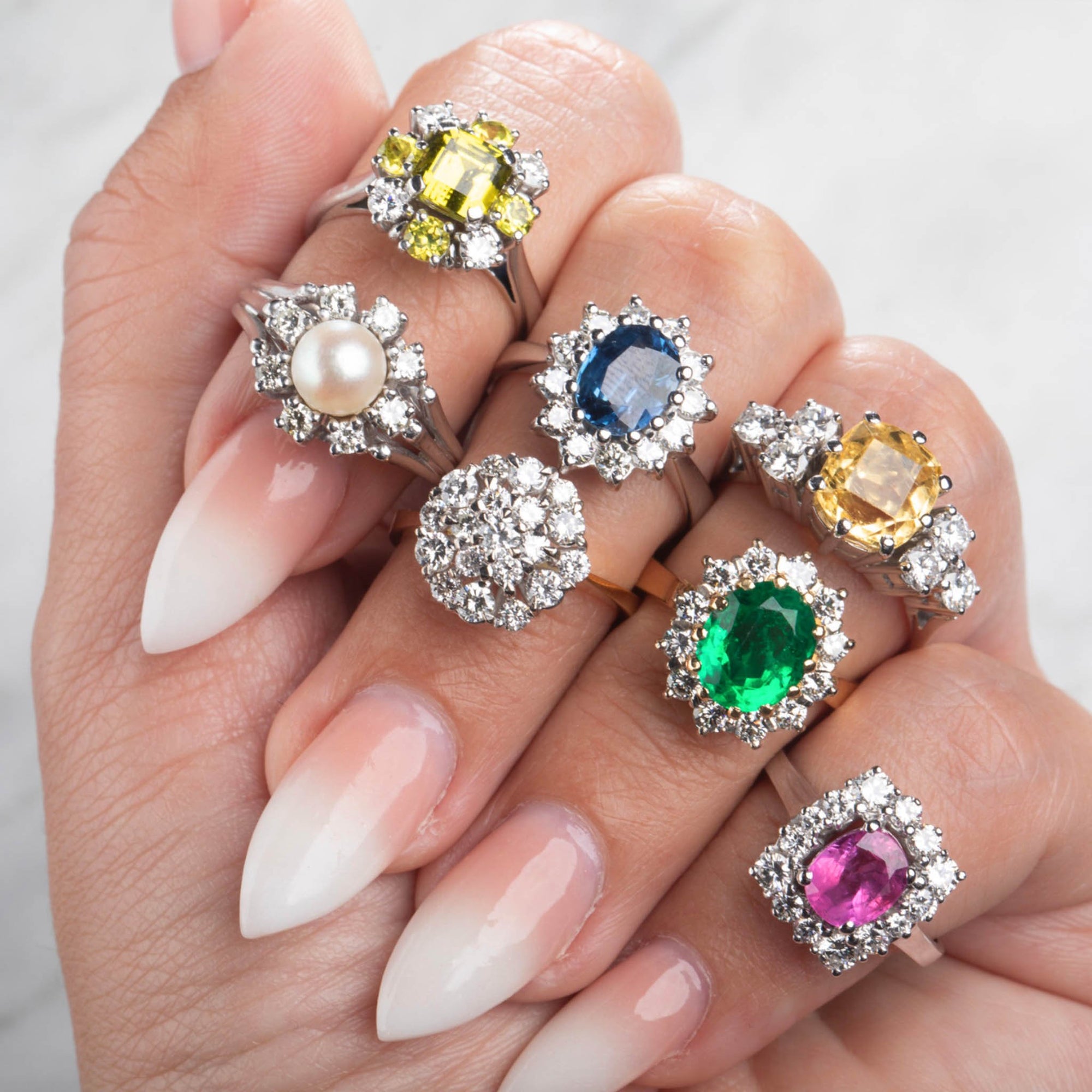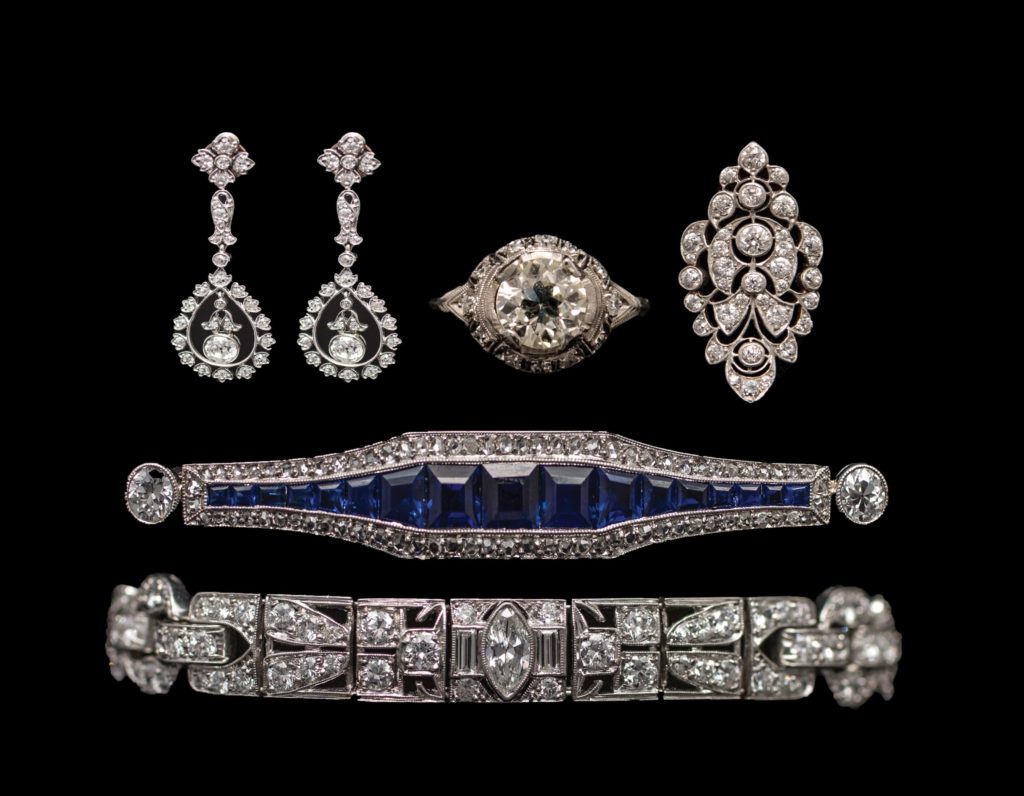Estate Jewelry: Why It’s a Great Investment for Collectors and Enthusiasts
Estate Jewelry: Why It’s a Great Investment for Collectors and Enthusiasts
Blog Article
Discover the Rich Background Behind Stunning Estate Precious Jewelry Collections
The exploration of estate precious jewelry collections uses a special window into background, disclosing the elaborate relationship in between workmanship and cultural evolution. What keys might these collections still hold?
The Beginnings of Estate Fashion Jewelry
How did estate jewelry come to personify the abundant history and virtuosity of lost eras? The beginnings of estate fashion jewelry can be traced back to numerous periods of workmanship, where fashion jewelry was not merely a device but a representation of societal worths, technological developments, and imaginative expressions. Each piece narrates, frequently related to the lives of their previous owners, enveloping personal stories alongside historic contexts.
The term "estate jewelry" normally describes used items, often from considerable periods such as Victorian, Art Nouveau, or Art Deco. These pieces were created with careful focus to information, showcasing the skill of craftsmens that used materials like gold, silver, and valuable gemstones. Unlike contemporary precious jewelry, estate items typically include one-of-a-kind designs that highlight the looks of their time, hence working as tangible links to the past.

Notable Design Periods
Throughout background, a number of significant style eras have actually significantly affected the development of estate fashion jewelry, each characterized by distinct designs, materials, and cultural contexts. The Georgian era (1714-1837) noted the beginning of intricate layouts, usually including nature-inspired motifs and the use of products like gold, silver, and gemstones established in intricate settings. Following this, the Victorian era (1837-1901) presented charming themes, with nostalgic fashion jewelry and innovative strategies such as making use of enamel and cameos.
The Art Nouveau period (1890-1910) commemorated organic kinds and the appeal of nature, utilizing products like opals and pearls in streaming designs. This was prospered by the Art Deco era (1920-1939), which welcomed geometric patterns, strong shades, and extravagant materials such as platinum and rubies, reflecting the modernist spirit of the moment.
The Mid-Century Modern era (1940-1960) showcased structured designs and the usage of non-traditional products, emphasizing minimalism and capability. Each of these eras not just reflects the creative movements of their time however additionally encapsulates the social worths and technical improvements that formed precious jewelry style, making them a fascinating subject for chroniclers and collectors alike.

Famous Estate Precious Jewelry Collections
The rich history of estate fashion jewelry is beautifully exemplified by a number of prominent collections that showcase the artistry and craftsmanship from numerous layout eras. One of the most popular is the Cartier Collection, which mirrors the deluxe and innovation of the famous French jewelry expert. Pieces from this collection typically read this post here include splendid gems and complex layouts, highlighting the brand name's dedication to great workmanship.
Another notable collection is the Duchess of Windsor's jewelry collection, which comprises several distinctive pieces, including the renowned "Windsor" bracelet. This collection not only exemplifies the elegance of the Art Deco period but additionally lugs an abundant story of love and loss, as it came from Wallis Simpson, that famously married Edward VIII.
The collection of the late actress Elizabeth Taylor also stands out in the realm of estate precious jewelry. With countless pieces made by popular jewelers like Bulgari and Cartier, her collection embodies prestige and refinement, emphasizing her individual style and affinity for one-of-a-kind gems.
These popular estate fashion jewelry collections serve as a testament to the long-lasting appeal of fine jewelry, supplying understanding into the cultural and imaginative activities that formed their creation.
The Social Relevance
Estate fashion jewelry collections hold profound social importance, reflecting not just the aesthetic values of their corresponding ages yet likewise the social and historical contexts in which they were produced. Each see this piece usually symbolizes the craftsmanship and imaginative trends of its time, showcasing the advancement of style and technology in fashion jewelry making.
Additionally, these collections function as substantial links to social traditions and routines. For example, wedding celebration bands and heirloom breastpins may represent love and familial bonds, while pieces adorned with details gemstones can stand for regional or cultural identifications. More about the author The products made use of-- whether gold, silver, or jewels-- often tell tales of profession, exploration, and the riches buildup of societies.
Furthermore, estate precious jewelry can operate as historical artifacts, supplying understandings into the lives of individuals and the societal standards they browsed. The means jewelry was used and valued can expose much concerning sex roles, status, and personal expression within differing social landscapes. Thus, estate jewelry transcends mere decoration, functioning as an abundant story of human experience, virtuosity, and social heritage, welcoming modern target markets to involve with the past in a meaningful way.
Taking Care Of Your Estate Parts
Caring for estate jewelry items needs a thoughtful method to ensure their long life and protect their distinct characteristics. Constantly clean estate jewelry making use of a soft, lint-free fabric after each wear to remove oils and dust.
Storage is equally vital; store items individually in a fabric-lined box to avoid scratching and entangling. Think about using anti-tarnish bags or cloths for silver things, as this assists to reduce the tainting procedure. Furthermore, avoid subjecting jewelry to too much moisture, severe temperature levels, or direct sunshine, which can adversely impact steels and gemstones.
Consulting a jewelry expert experienced in vintage or antique items can give specialized care alternatives. By implementing these practices, collection agencies can maintain their estate jewelry's visual and historic worth, ensuring these pieces continue to be treasured for generations to come.
Final Thought
In verdict, the expedition of estate jewelry collections reveals a tapestry of creative expression and cultural relevance, mirroring the worths and aesthetics of various historical periods. When had them, each piece serves as a testimony to remarkable craftsmanship and the narratives of those who. Understanding the origins, design periods, and notable collections enhances appreciation for these artefacts, stressing their duty in protecting social heritage and encouraging continued stewardship and look after these impressive prizes.
The expedition of estate fashion jewelry collections provides a distinct window right into background, exposing the elaborate relationship in between workmanship and cultural evolution. The beginnings of estate precious jewelry can be traced back to various durations of workmanship, where fashion jewelry was not merely a device however a reflection of social values, technical advancements, and artistic expressions.The term "estate precious jewelry" commonly refers to previously owned pieces, often from significant periods such as Victorian, Art Nouveau, or Art Deco.The rich background of estate fashion jewelry is wonderfully exemplified by numerous popular collections that display the creativity and craftsmanship from numerous design periods.In final thought, the exploration of estate fashion jewelry collections reveals a tapestry of creative expression and social importance, reflecting the values and appearances of various historical periods.
Report this page